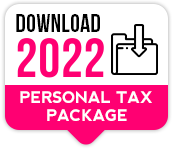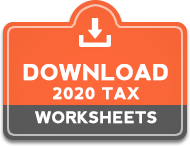
What to know as RRSP reporting measure takes effect
April 15, 2024
FP Answers: What are the tax consequences of selling a small business to my son?
April 30, 2024Instead of spending it immediately, why not put that money to work?
The majority of Canadians receive a refund each year, and all that means is that during the 2023 tax year, they paid too much in taxes.
If you’re in the process of filing (April 30 is the deadline), or have filed, and you’re expecting a refund, why not put that money to work for you instead of spending it?
Pay off high-interest loans
The interest rates on mainstream credit cards hover around 22 per cent. Personal loan and line of credit interest varies widely, but if it’s over 13 per cent, you can consider that expensive debt. If high-interest pesky debt is gobbling up your cash flow each month, tackling it with your refund is an obvious win.
Singing in the rain
Build your rainy-day fund. The goal is to get this high-interest savings account (HISA) to be the equivalent of between three and six months’ worth of your essential costs. In the event you run into a legit emergency, you’ll use this money to see you through.
Save for future you
By making an RRSP contribution, you’ll receive another tax deduction for next year’s tax return, which may help you get another refund in spring 2025. Annually, you’re allowed to contribute up to 18 per cent of your income in your RRSP, up to $31,560 in 2024. Check your carry-forward room in your CRA My Account portal so that you don’t over-contribute. TFSAs are another great way to save; but keep in mind you won’t get a tax credit. Rather, your after-tax TFSA contributions will grow tax-free. With an RRSP you pay taxes down the road in retirement.
RESPs for future scholars
Don’t miss out on getting the Canada Education Savings Grant. When you contribute to your child’s Registered Education Savings Plan (RESP), your money is matched 20 per cent (up to $500 per year per child). When invested well, that money will grow tax deferred until the money is withdrawn for your child’s future education costs. Depending on your family’s income level, the Canada Learning Bond might also be available to your child. So, if you have young children, using your tax refund to add to an RESP is a great way to save for future post-secondary education costs.
Soul splurge
It might be your situation where the best thing to do with your refund is something that’s good for your soul. Patio furniture, running shoes, golf clubs, vacation? Though it may seem counterintuitive, wealthy people don’t shy away from rewarding themselves, and neither should you. Be smart about it. Avoid debt. Only use the money you have. And make sure your financial house is in order before you splurge.
Give
Pick your favourite charity and give some of your tax refund. Not only will this help your community and make you feel good, but the Canada Revenue Agency will issue you an attractive tax credit which can be applied to next year’s tax return. Curious about what a tax credit might look like for you? Try the Canadian Red Cross tax calculator.
The right plan for your tax return might be a combination of these ideas to spend, give, save and reduce debt; and that balanced approach works, too.
Post Credit: Toronto Star
(https://www.thestar.com/business/personal-finance/top-ways-to-put-your-tax-refund-to-work-for-you/)







